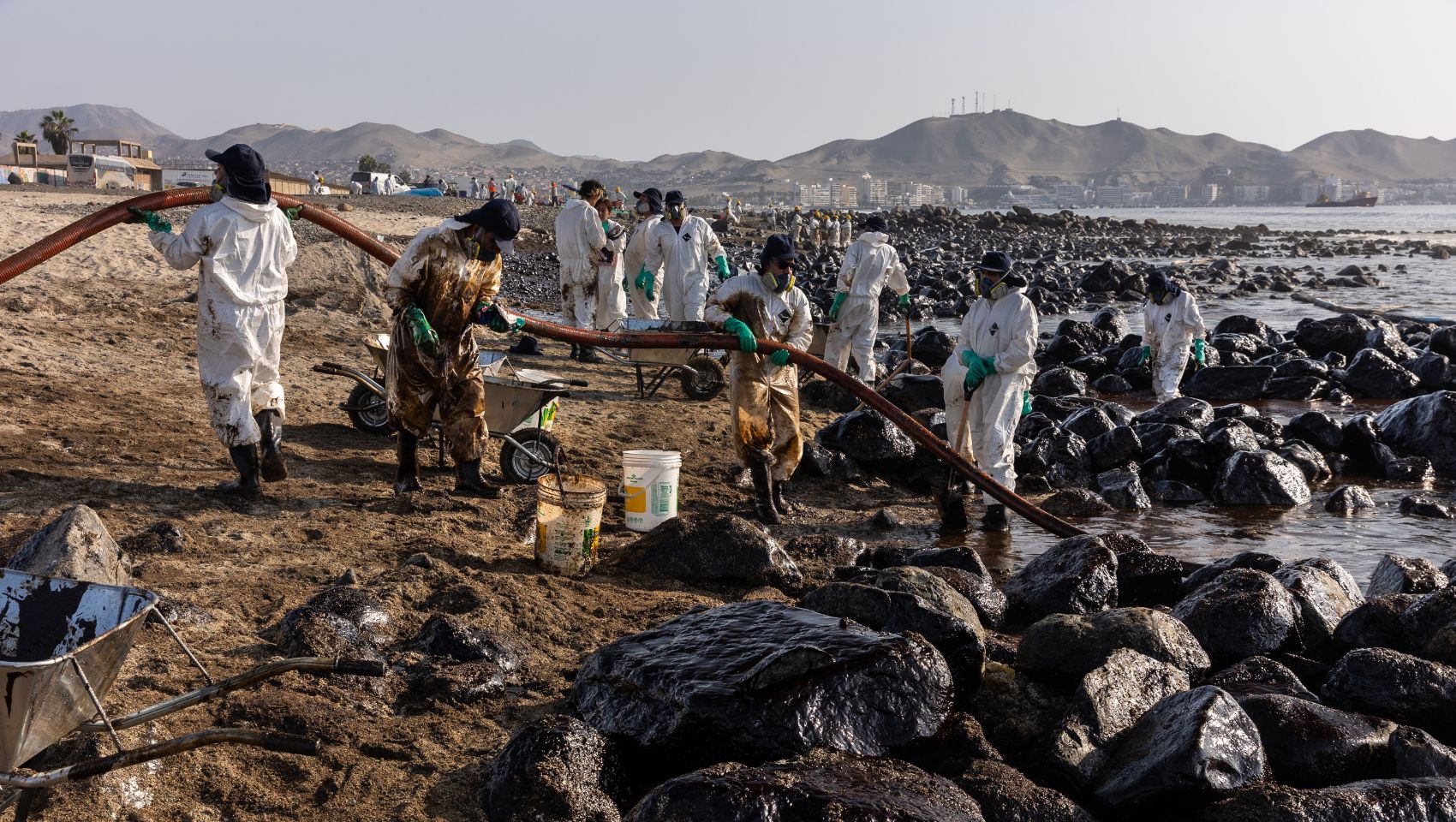Three years after the Repsol oil spill: justice is still not being served

Three years have passed since one of the biggest environmental disasters on the Peruvian coast occurred: the Repsol oil spill in the Peruvian sea. However, the Peruvian state continues to delay the establishment of responsibilities, the implementation of corrective measures and the approval of rehabilitation plans to restore the affected areas.
This delay on the part of the authorities can be seen in the unfinished processes still being carried out by institutions such as the Environmental Evaluation and Inspection Agency (OEFA), the National Forestry and Wildlife Service (Serfor), the National Service of Natural Areas Protected by the State (Sernanp) and the Ministry of Energy and Mines (Minem). At the same time, a large number of people continue to wait to be included in the compensation process for those affected by the oil spill.
In this context, Isabel Calle, Executive Director of the Peruvian Society of Environmental Law (SPDA), asserts that the delay in these processes makes it impossible to apply sanctions and corrective measures: “After three years of the Ventanilla spill, the state’s delay in taking care of the affected people and the damaged areas is worrying”.
“There is an urgent need to complete the administrative sanction procedures and approve the rehabilitation plans. Failure to do so could aggravate the situation in the affected areas,” she said.
DELAY IN ADMINISTRATIVE PROCEEDINGS
Following the oil spill in January 2022, the OEFA opened 18 administrative sanction proceedings (PAS) against Repsol to determine its responsibility for providing false information about the volume of the spill and the area affected, and for failing to comply with beach clean-up and patrols. To date, however, responsibility has only been established in 5 cases, according to the OEFA’s report to the SPDA dated 19 December 2002.
Similarly, Serfor has not yet reopened the PAS against Repsol for the offence of cruelly treating 198 specimens that did not die after the spill in the Peruvian sea.
In addition, Sernanp initiated two cases against Repsol for affecting two protected natural areas: the National Reserve of the System of Islands, Islets and Puntas Guaneras and the Ancon Reserved Zone. In both cases, the deadlines for resolution exceeded 2 years.
For its part, Minem exceeded the initial deadline for approving the rehabilitation plans submitted by Repsol. According to the regulations, Minem had only 30 working days to evaluate these plans, which were submitted by March 2024. It should be noted that the remediation plans are instruments that include actions to remediate the affected area.
OIL SPILL IN PERU
What happened on 15 January 2022 demonstrates the importance of implementing urgent and timely measures to deal with environmental emergencies, ensuring justice and reparation for the affected communities and the environment.
Oil spills in Peru are not isolated incidents, but frequent situations. Between 1997 and 2023, 1462 oil spills were registered in Peru. On 21 December last year, a new environmental emergency was registered: the spill in Lobitos (Piura).
DATA
- On 20 December, Petroperu reported an oil spill in the sea of Piura.
- In the afternoon of Saturday 21 December, residents of Lobitos (Piura) recorded images of the appearance of oil on Capullana beach.
- On 25 December, Minam declared a state of environmental emergency for 90 days in the affected area, which stretches from the Talara refinery to Cabo Blanco beach.
- Ministerial Resolution 00443-2024- MINAM “verified the displacement of the spilled hydrocarbon in the intertidal and subtidal zone, covering areas of 47.14 and 228.74 hectares respectively, from the Talara Refinery to Cabo Blanco beach”.
- In addition, it indicates that oil was found on the beaches of Las Capullanas, Punta Malacas, Yapato, El Alto, Peña Negra and Retín de Cabo Blanco.